Kristin Austreid
Et underlig redskap
Exhibition opening:
Friday November 15th, 6— 9pm
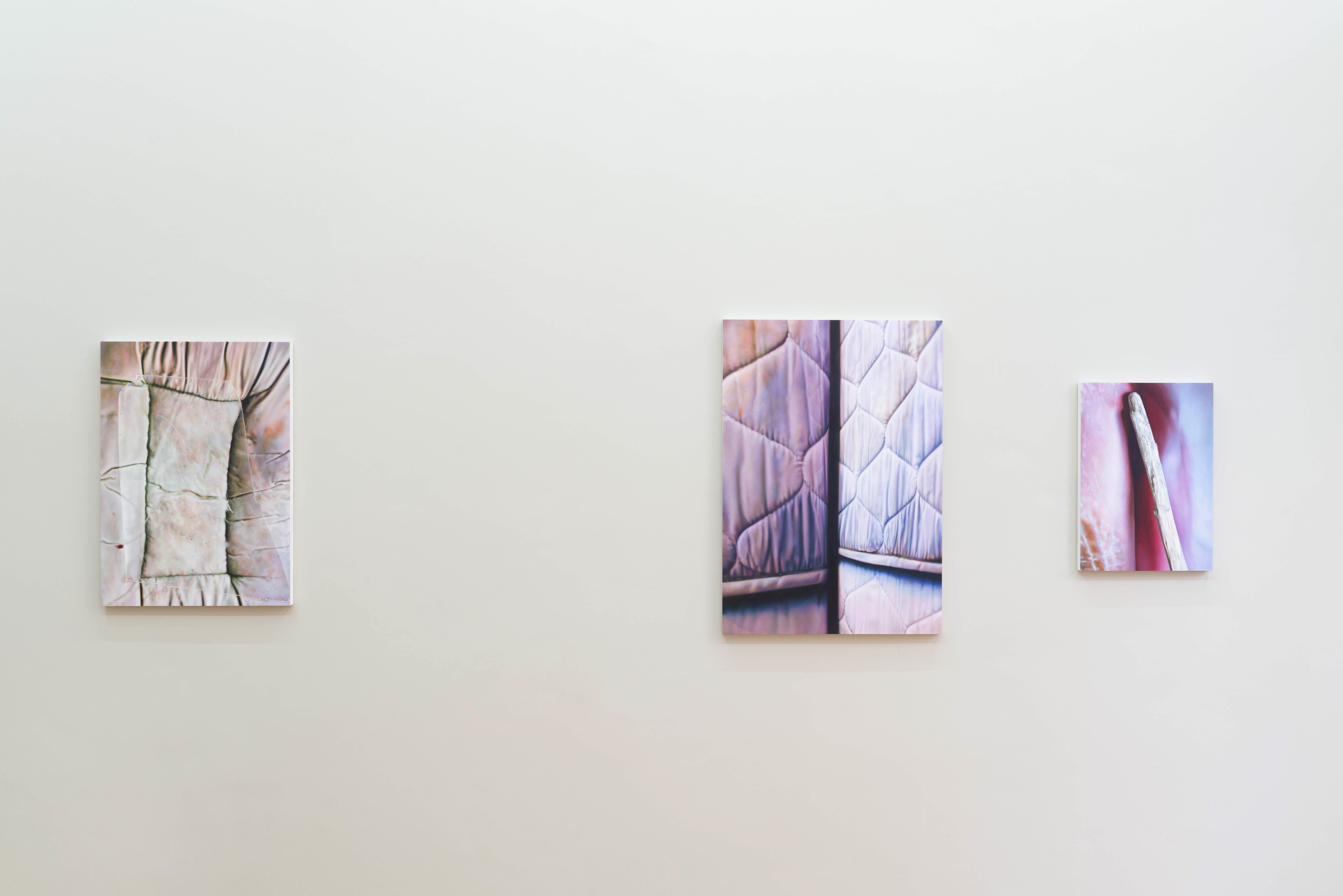
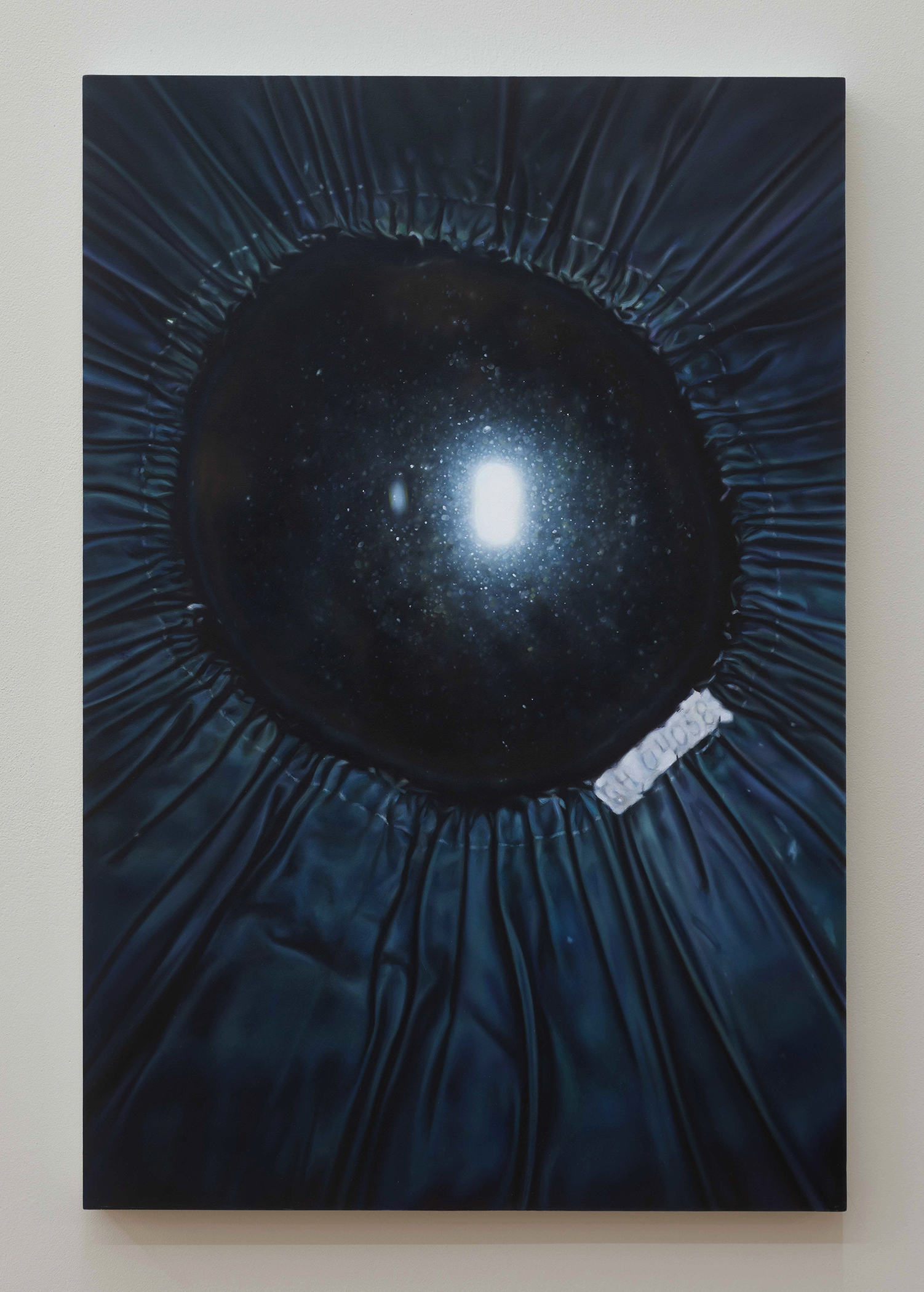
Kristin Austreid, Duo XIII (2019), oil on panel. All photos by Thor Brødreskift
Jeg holder et underlig redskap i hånden. Å beskrive det ville ta all
tilgjengelig tid. Dets utstrekning – men jeg vet ikke engang hva utstrekning er.
Materialet det er laget av, forekommer meg gudelignende. Gudelignende? Jeg har
aldri sett Gud. Hvordan skulle noe ligne Gud? I et visst lys (nedadgående sol,
svart røyk fra bålene) ser det ut som en del av hånden.
Hvilket formål er det laget for? De fleste redskaper er utformet med
tanke på én, høyst to, helt spesifikke handlinger. Bøte et garn, stikke hull i
et lærbelte. Formålet lar seg utlede av formen. Ikke slik med dette. Er det i
det hele tatt et redskap?
Jeg kunne slå et menneske i hjel med det, jeg kunne også kjærtegne
noen, om noen kom forbi som lot seg kjærtegne.
...Hvor mange før meg har sammenlignet månen med en sølvmynt? Med en sigd? Med en sitron? Hvor mange før meg har beskrevet mørke som en kappe? Dagligdagse gjenstander: frukt, himmellegemer, verktøy. Men jeg blir aldri fortrolig med dem. I smug stirrer jeg på tingene som en forrykt, mistenksom, nesten hatefull. Jeg begriper dem ikke. Selv når jeg holder dem i hånden.
(Ingvild Burkey, 2017)
Entrée er
stolte av å presentere en separatutstilling med Kristin Austreid. I en serie
nye malerier er forskjellige gjenstander og overflater satt sammen til
surrealistiske komposisjoner av overlappende lag. Her er et forhistorisk
steinredskap plassert side om side med en nedslitt pinne.
Gjennom åpningen i en pyntepute fra et
museumslager, ser vi rett på en skitten vindusrute opplyst av blitsen fra et
fotoapparat.
Ulike
perspektiv og synsvinkler er stilt opp mot hverandre, også i ett og samme
bilde. Mellom maleriene etableres kuriøse forbindelser som nettopp gjennom det
uventede kan åpne for refleksjon, både rundt hva det vil si å betrakte noe og
rundt maleriets språk. Maleriene heller mot det fotorealistiske, samtidig er
formale og abstrakte kvaliteter gitt et tydelig fokus. Bagatellmessige spor og flekker,
baksider eller overflater vi vanligvis dekker over er studert på nært hold, og
sammen med det grunne perspektivet virker også maleriets fysiske flate
nærværende. Fokuset på detaljer vitner om en langsom prosess der representasjon
i maleriet og tingenes flertydighet er veid opp mot hverandre; forholdet mellom
det flate og det romlige, nærhet og avstand, mellom det å se på og det å se inn
i. I forlengelsen av dette oppstår mer intime møter, hvor mening og
ubetydelighet ikke alltid lar seg skille.
Kristin
Austreid (f.1985, Haugesund) bor og arbeider i Bergen.
Hun har
en mastergrad fra Kunst- og designhøgskolen i
Bergen (2014).
Austreids arbeider er både fotorealistiske og
abstrakte, alltid konsentrert om grunnleggende emner som komposisjon, farge og
form. Interessen for optikk, persepsjon og betraktning går igjen i arbeidene. I
tillegg til flere separatutstillinger og gruppeutstillinger i Norge, blant
annet på Galleri LNM, Kunstnerforbundet, Agder Kunstsenter, Bergen Kjøtt og
Høstutstillingen, er hun innkjøpt av Oslo kommune, Equinors Kunstsamling,
Haugesund Billedgalleri og The City of Burgdorf i Sveits. I 2016 mottok hun The
P:I:G Prize fra The P:I:G Foundation v/Henrik Vibskov. Hun har deltatt på AiR
ved blant annet Circolo Scandinavo, Roma (ITA), Gallery Svalbard, Longyearbyen
(NO) og Die Fabrik, Burgdorf (CHE).
Velkommen til utstillingsåpning på fredag kl. 18!
Åpningstider ved Entrée (frem til 22. desember) er tors - søn, kl. 12-16.
Presse
29.11.2019
Kunstkritikk
Lige før migrænen
Av Susanne Christensen
29.12.2019
Kristin Austreid at Entrée
ArtViewer
// English//
Entrée is
proud to present a solo exhibition with Kristin Austreid. In her new series of
paintings, different objects and surfaces are put together in surreal
compositions of overlapping layers. A prehistoric tool is placed next to a dilapidated stick. Through
the back of a decorative pillow from a museum warehouse, we look
straight at a dirty windowpane illuminated by the flash from a camera. Different perspectives and
viewpoints are set up against each other, even in one and the same image. Curious
connections are established between the paintings, which, through the
unexpected motivates reflection, concerning the act of looking
itself and the language of painting. The paintings lean towards the
photorealistic, at the same time, formal and abstract qualities are given
a clear focus. Trivialities like stains and traces, backsides or
surfaces we usually disguise, are studied up close, and along with the shallow
perspective, the physical surface of the painting seem present. The focus on
details indicates a slow process where representation in painting and the
ambiguity of things are measured against each other; the relationship between the flat and the spatial,
proximity and distance, between looking at and looking into. As a result of
this, more intimate encounters occur, where meaning and insignificance are not
easily separated.
Kristin
Austreid (b.1985, Haugesund) lives and works in Bergen. She holds a master's
degree from Bergen Academy of Art and Design (2014). Austreid's work is both photorealistic and
abstract, always concentrated on basic topics such as composition, color and
shape. Her interest in optics, perception and the observing gaze are
returning themes in her work. In addition to several solo- and group exhibitions
in Norway, including at Galleri LNM, Kunstnerforbundet,
Agder Kunstsenter, Bergen Kjøtt and Høstutstillingen, her work has been included in the collections
of Oslo Municipality, Equinor’s Art Collection, Haugesund Billedgalleri and The
City of Burgdorf in Switzerland. In 2016 she received The P: I: G Prize from
The P: I: G Foundation v / Henrik Vibskov. She has participated in AiRs at,
among others, Circolo Scandinavo, Rome (ITA), Gallery Svalbard, Longyearbyen
(NO) and Die Fabrik, Burgdorf (CHE).
Welcome to the exhibition opening this Friday at 6pm!
Opening hours at Entrée (until December 22nd) is Thur - Sun, noon-4pm.

Duo XII
66,5 x 47,3 cm
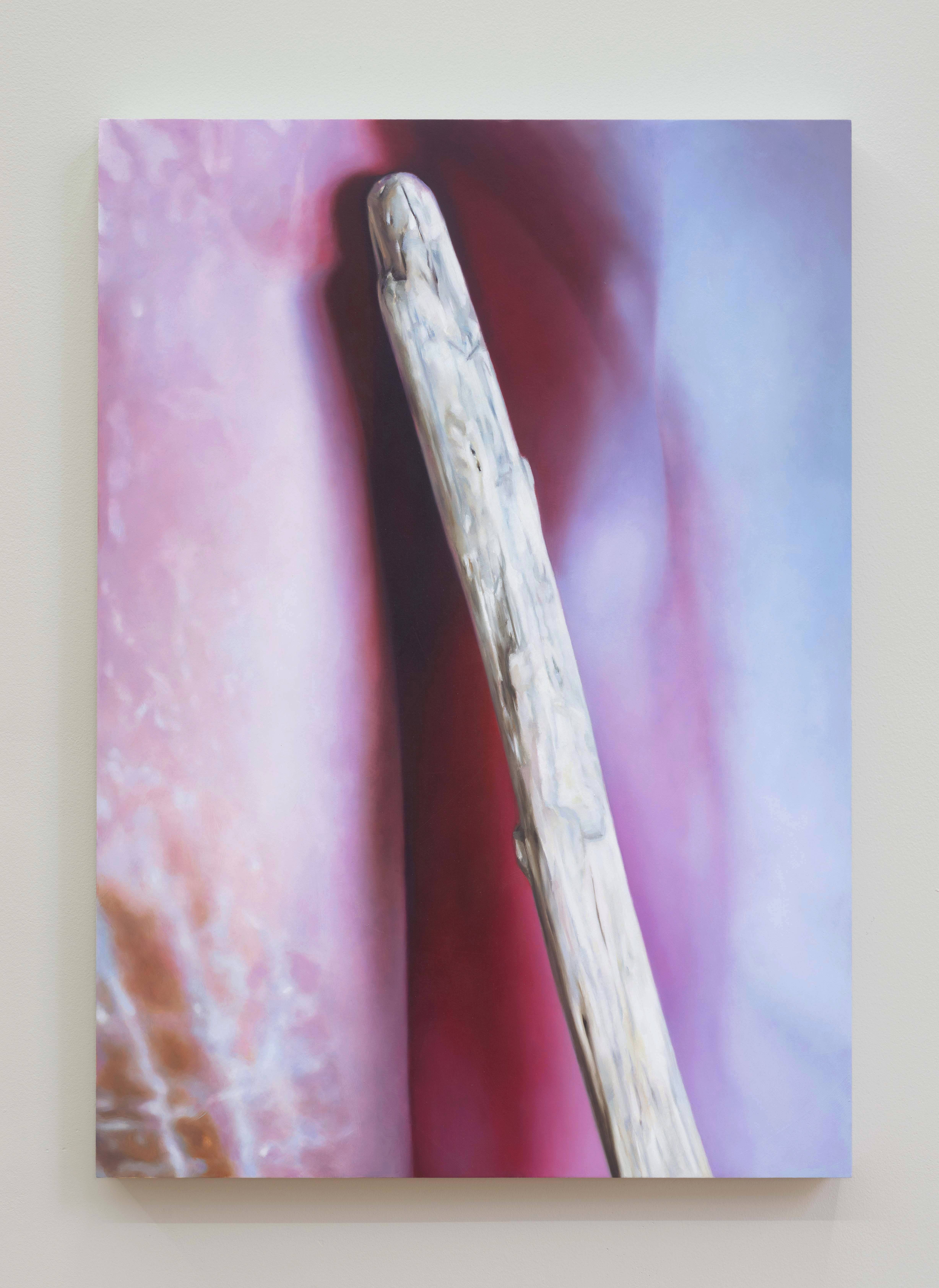 Duo X
Duo X 48 x 34 cm

Splitt
80 x 56 cm
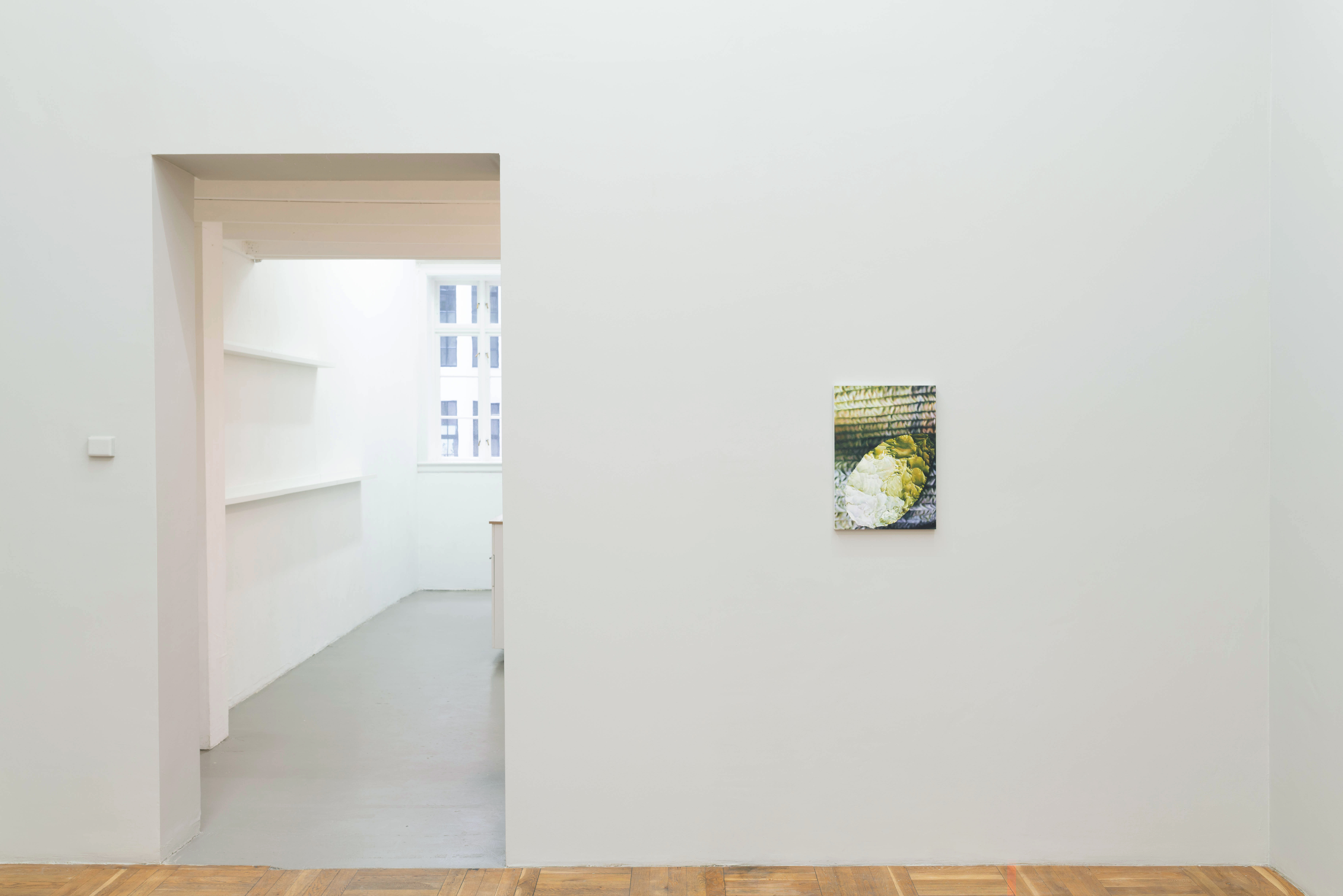
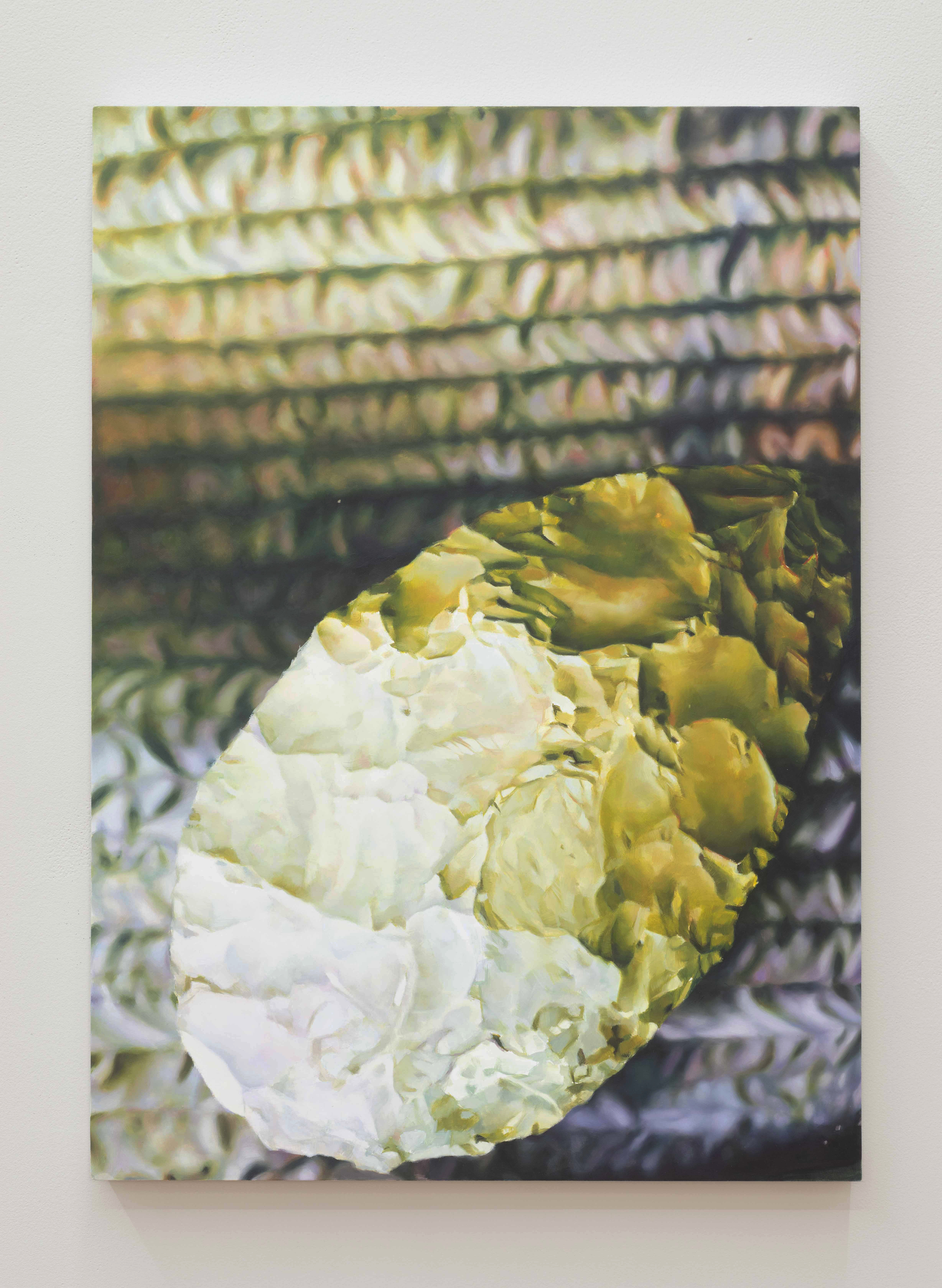
Duo XI
48 x 34 cm

Mono III
42 x 30 cm
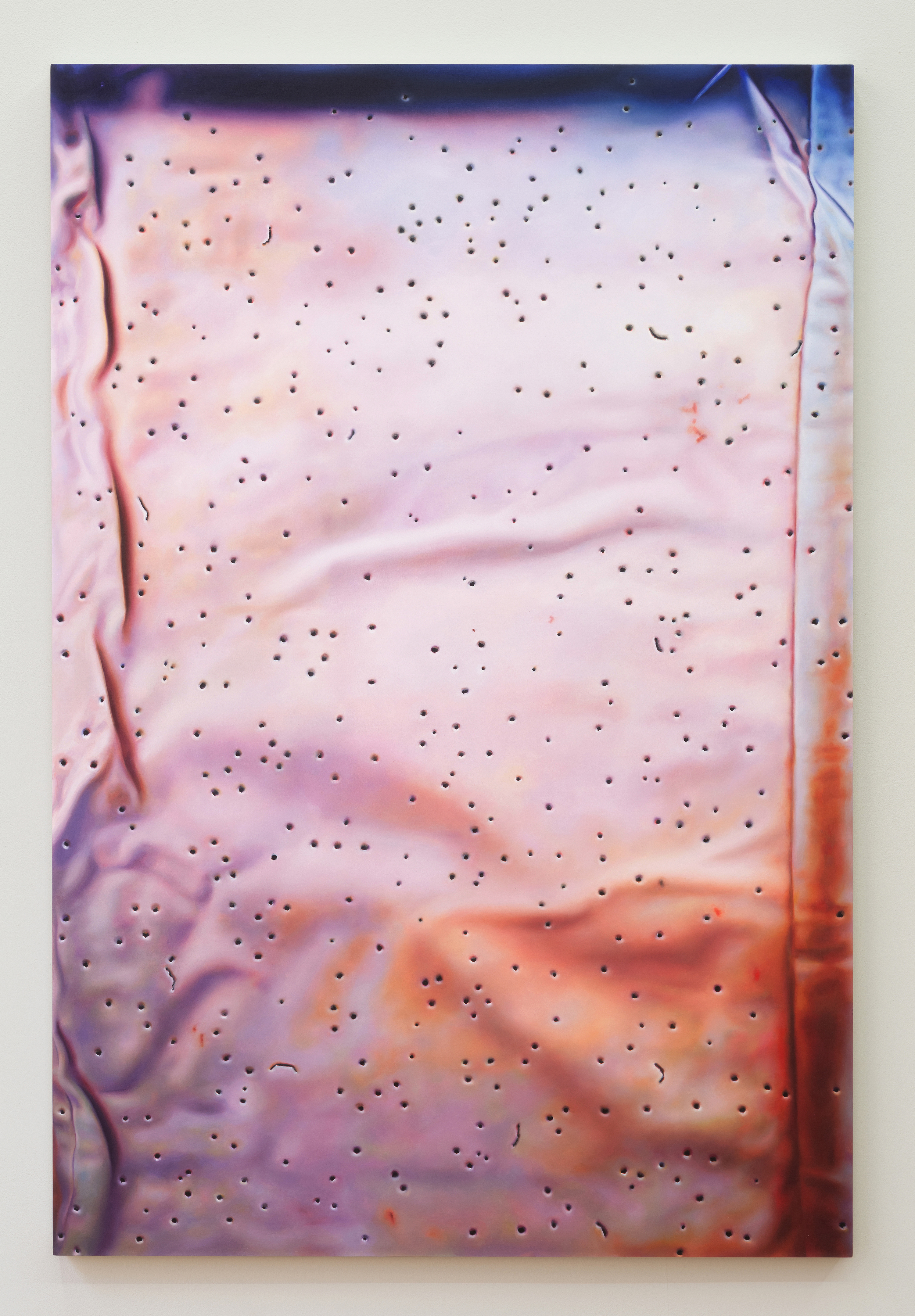
Mono IV
100 x 67 cm
Dear Kristin,
I’ve repeatedly returned to rewriting a suitable apology. My delayed response is not at all down to confusion because you didn’t “narrow things down.” In fact, it is this staying with ambivalence, being surrounded by an ambience of possibility (such “cruel optimism”!) that strikes me most in the images you sent me. I’ve been trying to think through this a little more. My hope has been that, as a dedication by other means, my gesture of apology would catalyse all my thoughts you’re about to read, putting them into a constellation parallel to that of your work. The demands of propriety, however they’ve seeped in, have left me with a gesture born of ballooning aspiration.
What I think I need to remember is that the temptation to scowl at the arrogance and delusion driving such aspiration (did I really think I could pull this off?) would be to ignore the social environment in which the pressure causing the “balloon” to inflate propagates: all the cultural forms saturated with heroic figures and an ethos of (self-) improvement (the underbelly of which is depression). You see, when oriented to the past, faced with its enormity, such future-oriented aspiration—to cover the whole ground, render everything perfectly, and give a full account—can turn into an ethics of arrogant retrospection in which the passing of time apparently gifts a heroic sense of purpose and of being on the frontier—a gift the dead did not and cannot have (as Walter Benjamin warned: “The only historian capable of fanning the spark of hope in the past is the one who is firmly convinced that even the dead will not be safe from the enemy if he is victorious. And this enemy has never ceased to be victorious.”)
Why is the socialization of this psychological dynamic important to bring up here? You see, I think it is an aspect of an approach to the past your recent work resists by turning what I consider to be your previous explorations of ambience and intimacy—how an ambience binds psychological and physical space—towards a meditation on relations to the past.
When conversing, we’ve often returned to notions of ambience, without really developing what we meant. With their drapery and aspects of arrangement and display, your work from the last couple of years seems to be more directly focused in its evocation of a specific ambience that might be best summed up by the title of an interview Tor Ulven did with Vagant magazine in 1993 (apparently, the only interview he ever did): “A language that glows, but pretends to lie under cold, heat-resistant glass” [Et språk som gløder, men later som det ligger under kalt, ildfast glass]. There’s a hallucinatory intensity to this work, varying with the specificities of lighting in each image, even if the scenes feel bounded and the spacing of the encounter fairly uniform. The latter, thought more ambiently in terms of affect rather than distance, is varied substantially in the new work you sent me images of (e.g. Duo X). The aspects of arrangement and display have been submerged, yet the still starkly lit, cloistered spaces now more clearly imply a surrounding capaciousness—life outside the image—by way of blur, shadow, reflection, and fissure, in addition to the sense that the images now feel varyingly cropped or magnified. In doing this, your work also drifts further from the trappings of the still-life scene in which symbolism is infiltrated by the showcasing of merchandise (as per the desires of a patron, perhaps). Strangely, you and I have never really spoken about historical examples of still life images.
What strikes me as most applicable now is the possibility to get a sense of the power of objects through the lens of a particular period and place by considering the collection of objects showcased in still lifes. This empowerment of objects (in addition to the owner’s flaunting of his or her wealth and taste) is something we can trace through the word “fetish” to the high period of still-life painting that also coincided with the violently exploitative economics of colonialism. Seventeenth century Dutch still lifes mark the modern fetishisation of commodities right at the time when Dutch merchants were experiencing the feeling of economic and colonial power in their extraction of fetish objects and people-objects (slaves) from communities on the coasts of Africa—as if the turning of people into commodities abroad enabled the personification of things at home. As slaves became expendable, this regime of objects was naturalised, giving a sickening tinge to the French and Italian terms for “still life”—natures mortes and natura morta (“dead nature”). The still life is perhaps, then, a memorial to this extraction and conferment of life from slave to object, its ambivalent “stillness” evincing the cancelling out of muffled screams by charmed murmur. Maybe all still life is also a vanitas or memento mori of expendable, exploited life, rather than a gentle, ornamental reminder of life’s privilege and privileged living? (I’d be interested to hear your thoughts on this given your selection of objects to paint) It should also not be forgotten that painting technique was radically developed in this period: the whimsical exercise of power over nature and people also involved an instrumentalisation of the artist who was tasked with the technical challenge of trying to animate innocuous objects with the tenderness of portraiture (I remember you also saying that you almost feel like you’re attending to human bodies when working).
Whilst the social dynamics in question have of course altered, if we were to maintain that still lifes are indicators of social values and the power of objects, your work would suggest that the abstraction of commodification is moving towards ambiences and atmospheres (something aligning with the movement of business strategies to a focus on “the experience economy”). Yet, as I alluded to above, simultaneously to “focusing” on ambience, your work mutes the previous grandeur of merchandise display by presenting objects such as scratched plates of glass (Duo XII) or, even, parts of unidentifiable things (Duo XIII).
Briefly returning to a aspects of proximity, a tactic some of your most recent work takes up is to bring us close to a specific part of something, or so close it’s difficult to see what the “something” I’m confronted with is. Still lifes are typically tilted displays, as if they were falling out the image; in your work I almost feel like I’m impinging on the compositions, keeping the objects together, pressing on their “front” (the “heat-resistant glass”?). However, this sense of closeness, this opportunity for scrutiny, is filtered through the work’s particular optics in which blur, depth of field, reflection, and shadow imply surroundings in which affective attunement to ambience seems more useful than knowing what it is I’m looking at. Closeness and proximity seem like blunt tools when considering your work.
I’m reminded of the intriguing conversation we had about the challenge of painting something with little visual information—so important when your work’s ambience resonates out from nuances of blur and depth of field. I think we agreed that gesture becomes vital: How to imply information that is ungraspable/imperceptible, whilst keeping a mark, a stroke, “alive” (as you put it)? Blur, then, as focus’s structural necessity, becomes the catalyst for a gestural attentiveness. In this sense, you’ve channelled the aforementioned technical achievements of fetishistic object animation in seventeenth century still life painting towards the blur that follows us around, as if looking to address the violence that propelled the previous technical developments.
I’m tempted to say that the work invites hallucination or nausea (remembering the latter’s relationship to noise), but its uneasiness might be better thought of as ambivalence (“ambi-“ denoting “around” or “surround”), an ambivalence of the alluring but nauseating intensity and the oblique implication of a surround outside the frame of the image—being drawn in and shown away simultaneously. When writing of looking at objects, Ingvild Burkey gets at this in a line from the excerpt you sent me: “In secret I stare at things like someone possessed, suspicious, almost hateful” [I smug stirrer jeg på tingene som en forrykt, mistenksom, nesten hatefull]. The ambivalence in your work is troubled and complicated, however, by the fissures and scarring of Mono III andMono IV, which emphasise the objecthood of the images, offering a way out of the woozy allure of the image. In addition to the introduction of a new “subject” in your work I didn’t previously cite above—namely, images from archives—, this emphasised objecthood invites a consideration of how ambience might offer a perspective on the past, something I only find present in your most recent work.
When viewing the gathered objects of still lifes, we might approach them like Walter Benjamin approached collecting: in terms of their fate. Having kept hardcopies of the images you sent in my wallet, inadvertent glances felt like I kept stumbling upon a set of forgotten instant-camerapictures, or old documentation of a crime-scene. Feeling almost like found objects, the imagery of Mono III and Mono IV breaks the other work and opens my imagination to temporal leaps: These images were important for something, for someone. How did they get here? What might they be, or have been, part of? What does their apparentness in the present speak of or to? An acoustic analog of your work’s optics would perhaps be to think of a listening to the past that listens to the reverberation of sounds—their (non-) spaces—rather than to their obviously “musical” elements.
Such a sensitivity would practice Benjamin’s reading of history “against the grain”, understanding the writing of history as also the violent but unavoidable circumscription of the past: writing out, writing over, and misquoting (and mishearing) in order to tell a story whilst always, also working in a larger field of storytelling. This is not merely a melancholic lamentation. Narratives in films, books, and imagery shape how we can relate for the past, bringing with it aspirational and affective norms, a dreamworld and sensitivity.
Your work’s engagement with ambience offers some resistance to conditions of aspiration in which we are offered heroic cultural figures and characters to identify with—and identify us—, powering principles of what it means to “get on (in life)” and, even, “have a life”, excavating a falling sea floor as water levels rise. Tragedies don’t need heroes (“coward” or “villain” as the dictionary-suggested antonyms of “hero” indicates the latter’s cultural entrenchment as “good”). The tragedy of ambience is born of a storytelling’s necessary omissions, passersby, and witnesses. Ubiquity and obliquity make up this falling-away others might call hope or potential. In this sense, silence promises meaning and bears trauma (we can perhaps think of the “little visual information” of blur here too)—the appearance of a thing and not many.
Of course, I’ve been thinking again of your desire to make yourself “more stupid than the work”. It’s a comment I have much sympathy for and, whilst it’s possible to relate it to a Surrealist enamour with the unconscious, I hear at this moment more in terms of a humbling of aspiration (although wanting to feel stupid might be because of a specific aspiration?). This process of stupefying, as you work to bind and meld what you think of as the “floating” objects in the photographs you take, is also, you said, to distance yourself—a strategy most often spoken of in terms of “getting an oversight” or “better sense” of some work, stepping back to “see the bigger picture.” In your work, I come close to see an implication of something similar, obliquely via the ambience shaped by way of the blur, shadow, and reflection of your work’s optics. As in your work process, distance does not yield knowledge in an encounter with your work, but neither does coming close feel intimate.
I remember writing to you after first spending some time with the work you presented in Oslo last year, stating that it was helping me think through aspects of sonic media technologies and intimacy I was confusing myself with at the time. Seeing your most recent work, I would say that how media technologies alter and differently produce feelings of space (and time)—as access and reach, we might say—is even more evident to me now. A particular aspect of this is that proximity and the “personal” are abstractions operative en masse in media technologies; “aura” is something else now. I find your work particularly instructive here in that it seems to perform the particular quality of spatial contraction and proximate anonymity of media technologies Sherry Turkle has wryly quipped gives a sense of “being alone together.”
Your work’s particular optics and ambivalent sense of spacing influenced by media technologies, how these suggest an attunement to ambience we could think of as both an orientation towards an a-heroic historiography and an indicator of contemporary forms of commodification, offers me a great deal when reflecting on the politics of contemporary image-making. There I go making it sound a bit heroic…
All my best,
Johnny
(Letter to Kristin Austreid, from Johnny Herbert, 15.11.2019)
